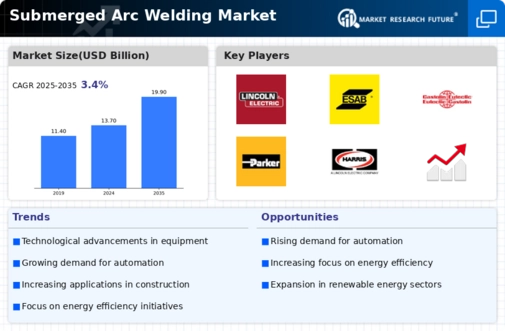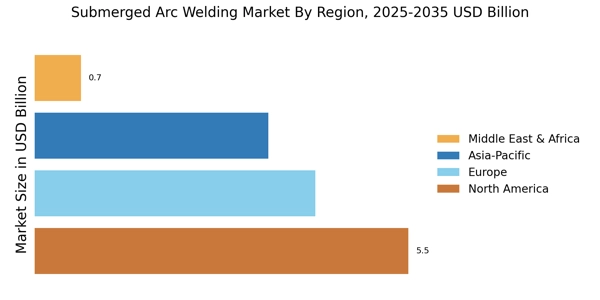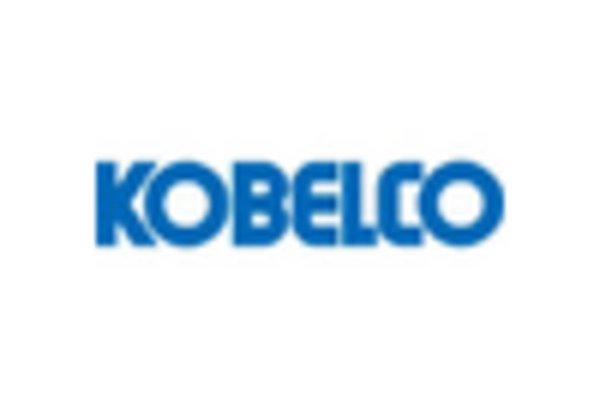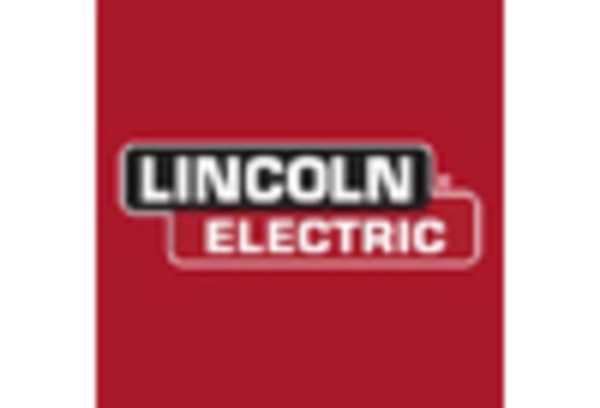Focus on Energy Efficiency
Energy efficiency is becoming a critical focus within the Submerged Arc Welding Market. As industries seek to reduce operational costs and minimize environmental impact, the demand for energy-efficient welding processes is on the rise. Submerged arc welding is known for its low energy consumption compared to other welding methods, making it an attractive option for manufacturers aiming to enhance sustainability. The increasing regulatory pressures to adopt greener practices further amplify this trend. It is estimated that energy-efficient welding solutions could reduce energy costs by up to 30%, thereby encouraging more industries to adopt submerged arc welding as a viable option for their operations.
Growing Automotive Manufacturing
The automotive manufacturing sector is a significant driver of the Submerged Arc Welding Market. As manufacturers strive for enhanced production efficiency and quality, submerged arc welding is increasingly adopted for its ability to deliver strong and durable welds. The automotive industry is projected to grow at a rate of approximately 3.8% annually, fueled by the rising demand for electric vehicles and advanced automotive technologies. This growth necessitates the use of reliable welding methods that can withstand the rigorous demands of vehicle assembly. Consequently, the adoption of submerged arc welding techniques is likely to expand, as they provide the necessary strength and reliability for automotive components.
Expansion of Shipbuilding Activities
The shipbuilding industry is witnessing a resurgence, which significantly impacts the Submerged Arc Welding Market. As countries invest in naval capabilities and commercial shipping fleets, the demand for high-quality welding solutions is escalating. Submerged arc welding is particularly advantageous in shipbuilding due to its ability to produce strong, deep welds in thick steel plates, essential for the structural integrity of vessels. The shipbuilding sector is expected to grow at a rate of around 4.2% annually, driven by increased global trade and maritime activities. This growth presents a substantial opportunity for submerged arc welding technologies, as they are integral to meeting the stringent requirements of modern ship construction.
Technological Advancements in Equipment
The Submerged Arc Welding Market is experiencing a notable transformation due to rapid technological advancements in welding equipment. Innovations such as automated welding systems and advanced control technologies enhance precision and efficiency. The integration of artificial intelligence and machine learning into welding processes allows for real-time monitoring and adjustments, which can significantly reduce defects and improve overall quality. Furthermore, the development of high-performance welding wires and fluxes contributes to better penetration and weld strength. As a result, the market is projected to grow at a compound annual growth rate of approximately 5.2% over the next few years, driven by these technological improvements that cater to diverse industrial applications.
Increasing Demand from the Construction Sector
The construction sector plays a pivotal role in driving the Submerged Arc Welding Market. With the ongoing expansion of infrastructure projects, including bridges, highways, and buildings, the demand for robust and efficient welding solutions is surging. Submerged arc welding is particularly favored for its ability to produce high-quality welds in thick materials, making it ideal for heavy construction applications. According to recent estimates, the construction industry is expected to witness a growth rate of around 4.5% annually, which directly correlates with the rising need for advanced welding techniques. This trend indicates a sustained demand for submerged arc welding, as it meets the rigorous standards required in modern construction.


















Leave a Comment